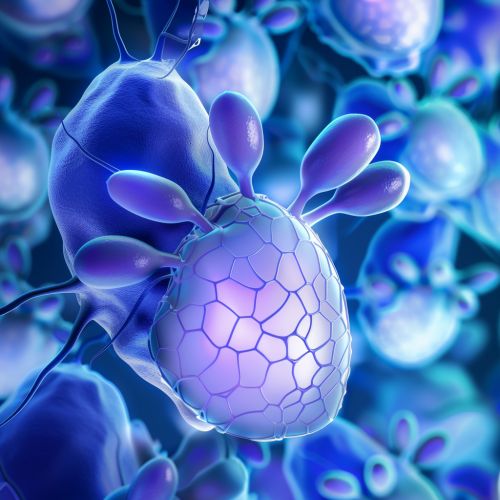Congenital adrenal hyperplasia
Introduction
Congenital adrenal hyperplasia (CAH) is a group of inherited genetic disorders that affect the adrenal glands, which are responsible for producing essential hormones such as cortisol, aldosterone, and androgens. These disorders result from mutations in genes that encode enzymes involved in steroidogenesis, leading to enzyme deficiencies that disrupt normal hormone synthesis. CAH is characterized by a spectrum of clinical manifestations, ranging from mild to severe, depending on the specific enzyme deficiency and its impact on hormone production.
Etiology and Pathophysiology
CAH is primarily caused by mutations in the CYP21A2 gene, which encodes the enzyme 21-hydroxylase. This enzyme is crucial for the biosynthesis of cortisol and aldosterone. Deficiency in 21-hydroxylase accounts for approximately 95% of CAH cases. Other less common forms of CAH result from deficiencies in enzymes such as 11β-hydroxylase, 17α-hydroxylase, and 3β-hydroxysteroid dehydrogenase.
The deficiency in these enzymes leads to impaired cortisol synthesis, resulting in increased secretion of adrenocorticotropic hormone (ACTH) from the pituitary gland due to lack of negative feedback. Elevated ACTH levels stimulate the adrenal cortex, causing hyperplasia and overproduction of adrenal androgens. This hormonal imbalance can lead to virilization, ambiguous genitalia in females, and other metabolic disturbances.
Clinical Manifestations
The clinical presentation of CAH varies depending on the specific enzyme deficiency and the severity of the condition. The most common form, 21-hydroxylase deficiency, can present in three main forms:
Classic Salt-Wasting CAH
This is the most severe form and is characterized by a complete deficiency of 21-hydroxylase. Affected infants present with symptoms of adrenal insufficiency, including vomiting, dehydration, hyponatremia, hyperkalemia, and hypovolemic shock. Females typically exhibit ambiguous genitalia due to prenatal androgen exposure.
Simple Virilizing CAH
This form involves partial 21-hydroxylase deficiency, leading to virilization without significant salt-wasting. Females may present with ambiguous genitalia at birth, while males may have normal genitalia but exhibit signs of early puberty, such as accelerated growth and advanced bone age.
Non-Classic CAH
This mild form of CAH presents later in life, often during adolescence or adulthood. Symptoms may include hirsutism, acne, irregular menstrual cycles in females, and infertility. Non-classic CAH is often misdiagnosed as polycystic ovary syndrome (PCOS) due to overlapping clinical features.


Diagnosis
The diagnosis of CAH is based on clinical presentation, biochemical testing, and genetic analysis. Newborn screening programs in many countries include testing for 21-hydroxylase deficiency by measuring elevated levels of 17-hydroxyprogesterone (17-OHP) in dried blood spots. Confirmatory testing involves measuring serum levels of 17-OHP, cortisol, and androgens.
Genetic testing can identify mutations in the CYP21A2 gene and other genes associated with CAH. Prenatal diagnosis is possible through chorionic villus sampling or amniocentesis for families with a known history of CAH.
Management and Treatment
The management of CAH involves hormone replacement therapy to correct deficiencies and suppress excess androgen production. The mainstay of treatment is glucocorticoid replacement, typically with hydrocortisone, prednisone, or dexamethasone. Mineralocorticoid replacement with fludrocortisone is necessary for patients with salt-wasting forms of CAH to maintain electrolyte balance and prevent dehydration.
Regular monitoring of hormone levels, growth, and development is essential to adjust medication dosages and ensure optimal outcomes. Patients with CAH require lifelong follow-up with endocrinologists to manage their condition effectively.
Complications
Untreated or poorly managed CAH can lead to several complications, including:
- Adrenal crisis: A life-threatening condition characterized by severe hypotension, dehydration, and electrolyte imbalances.
- Virilization: Excess androgen exposure can result in masculinization of female genitalia and early puberty in both sexes.
- Infertility: Hormonal imbalances can affect reproductive function in both males and females.
- Psychological impact: Individuals with CAH may experience psychosocial challenges related to their condition and its management.
Prognosis
With appropriate treatment and management, individuals with CAH can lead normal, healthy lives. Early diagnosis and intervention are crucial to prevent complications and optimize outcomes. Advances in genetic testing and prenatal diagnosis have improved the ability to identify and manage CAH effectively.
Research and Future Directions
Ongoing research in the field of CAH focuses on improving diagnostic techniques, developing novel therapies, and understanding the genetic and molecular mechanisms underlying the disorder. Gene therapy and other innovative approaches hold promise for future treatment options that may offer more effective and less burdensome management of CAH.
